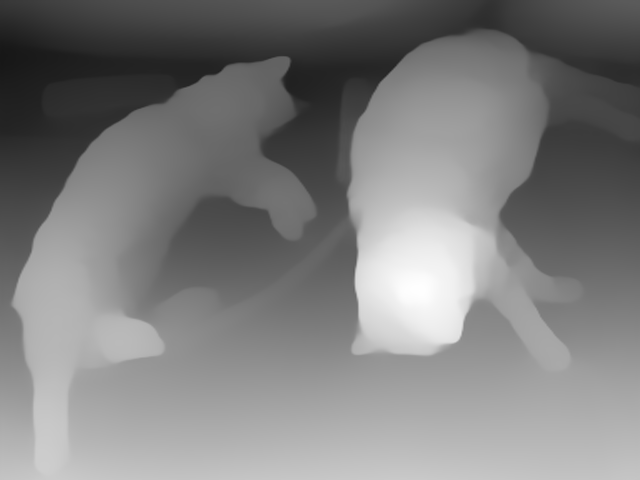Depth Estimation
Depth estimation is the task of predicting depth of the objects present in an image.


About Depth Estimation
Use Cases
Depth estimation models can be used to estimate the depth of different objects present in an image.
Estimation of Volumetric Information
Depth estimation models are widely used to study volumetric formation of objects present inside an image. This is an important use case in the domain of computer graphics.
3D Representation
Depth estimation models can also be used to develop a 3D representation from a 2D image.
Depth Estimation Subtasks
There are two depth estimation subtasks.
Absolute depth estimation: Absolute (or metric) depth estimation aims to provide exact depth measurements from the camera. Absolute depth estimation models output depth maps with real-world distances in meter or feet.
Relative depth estimation: Relative depth estimation aims to predict the depth order of objects or points in a scene without providing the precise measurements.
Inference
With the transformers library, you can use the depth-estimation pipeline to infer with image classification models. You can initialize the pipeline with a model id from the Hub. If you do not provide a model id it will initialize with Intel/dpt-large by default. When calling the pipeline you just need to specify a path, http link or an image loaded in PIL. Additionally, you can find a comprehensive list of various depth estimation models at this link.
from transformers import pipeline
estimator = pipeline(task="depth-estimation", model="Intel/dpt-large")
result = estimator(images="http://images.cocodataset.org/val2017/000000039769.jpg")
result
# {'predicted_depth': tensor([[[ 6.3199, 6.3629, 6.4148, ..., 10.4104, 10.5109, 10.3847],
# [ 6.3850, 6.3615, 6.4166, ..., 10.4540, 10.4384, 10.4554],
# [ 6.3519, 6.3176, 6.3575, ..., 10.4247, 10.4618, 10.4257],
# ...,
# [22.3772, 22.4624, 22.4227, ..., 22.5207, 22.5593, 22.5293],
# [22.5073, 22.5148, 22.5114, ..., 22.6604, 22.6344, 22.5871],
# [22.5176, 22.5275, 22.5218, ..., 22.6282, 22.6216, 22.6108]]]),
# 'depth': <PIL.Image.Image image mode=L size=640x480 at 0x7F1A8BFE5D90>}
# You can visualize the result just by calling `result["depth"]`.
Useful Resources
Compatible libraries
No example widget is defined for this task.
Note Contribute by proposing a widget for this task !
Note Cutting-edge depth estimation model.
Note A strong monocular depth estimation model.
Note A depth estimation model that predicts depth in videos.
Note A robust depth estimation model.
Note NYU Depth V2 Dataset: Video dataset containing both RGB and depth sensor data.
Note Monocular depth estimation benchmark based without noise and errors.
Note An application that predicts the depth of an image and then reconstruct the 3D model as voxels.
Note An application for bleeding-edge depth estimation.
Note An application on cutting-edge depth estimation in videos.
Note A human-centric depth estimation application.
No example metric is defined for this task.
Note Contribute by proposing a metric for this task !